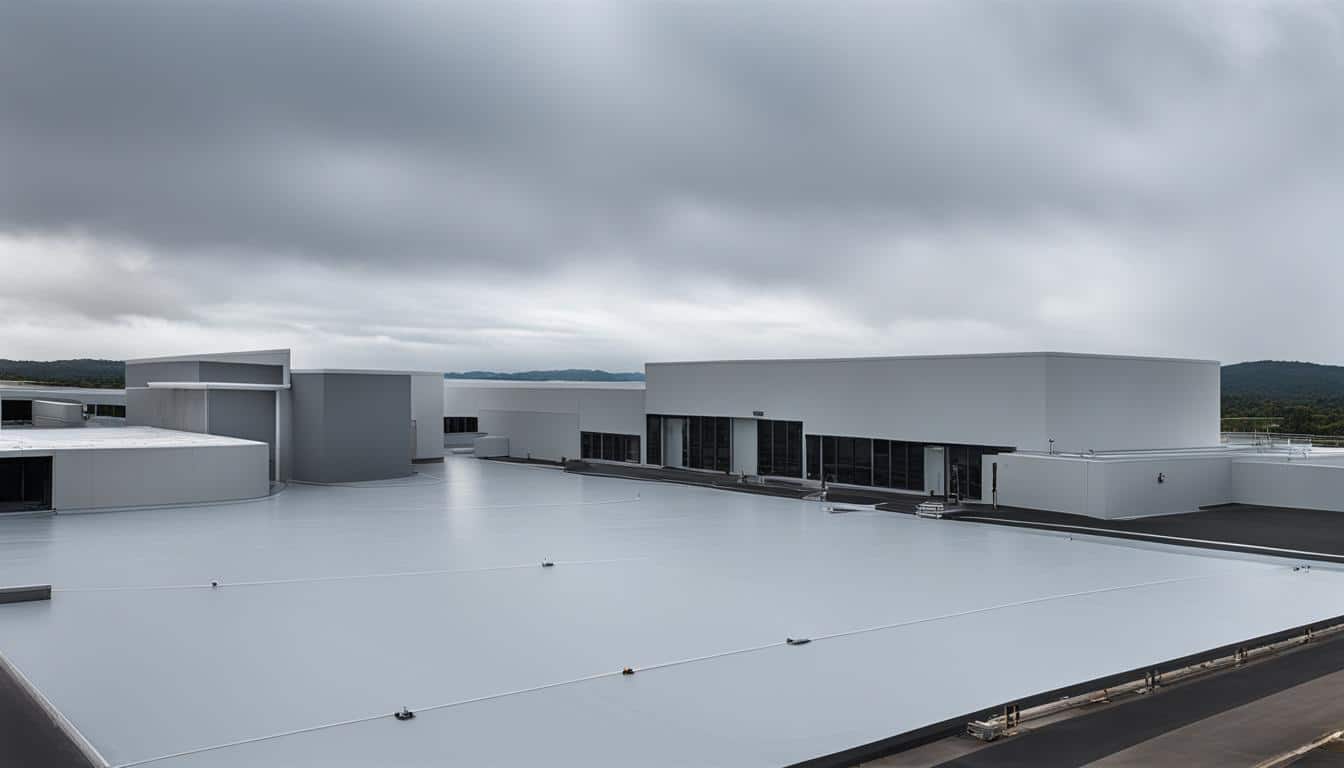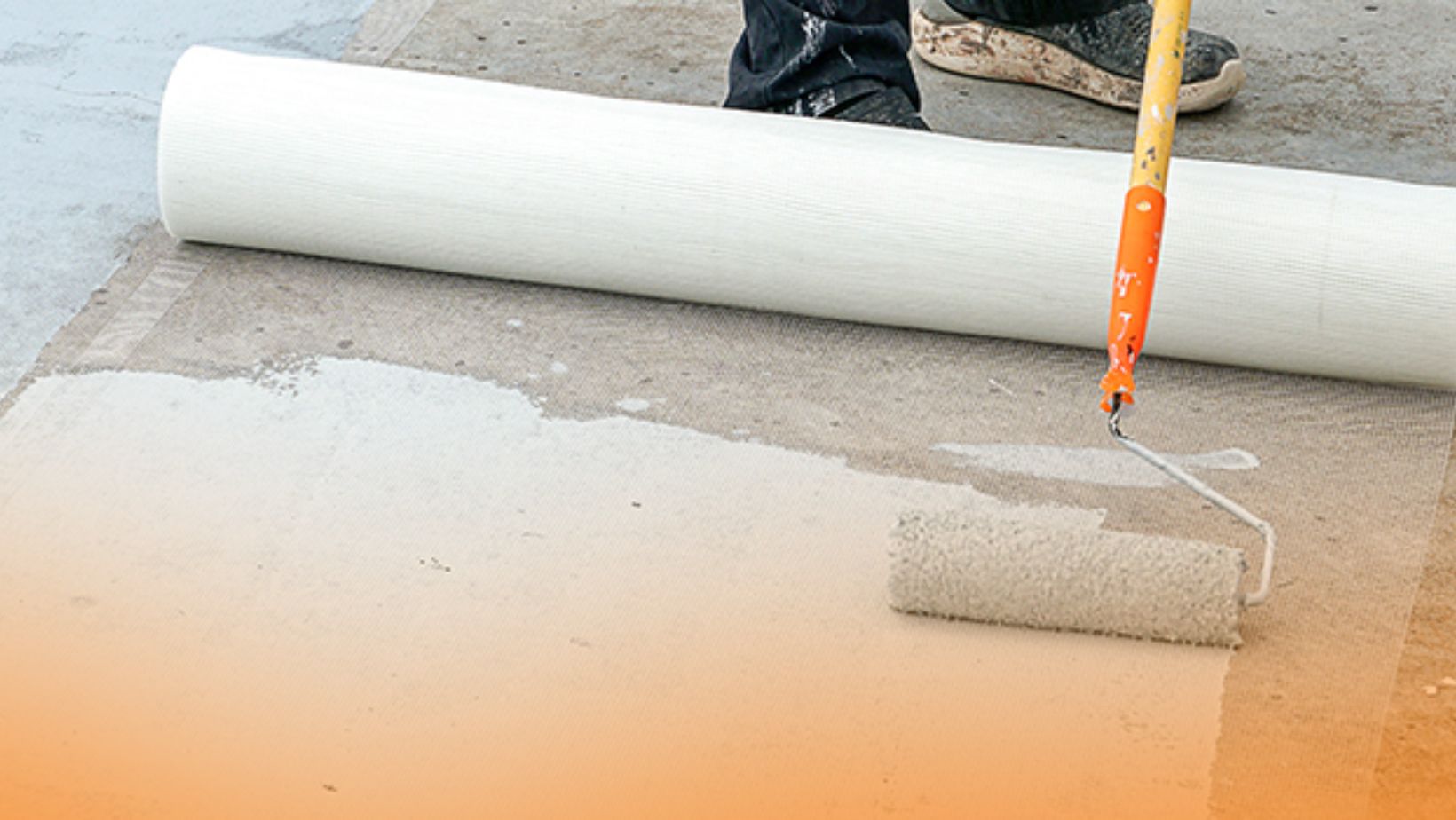At SmartSeal, we love eco-friendly roofing. In this article, we will discuss sustainable roofing solutions. In this first section, we will explore the benefits of green roof coatings and how they can enhance the sustainability of your building. Green roof coatings, also known as eco-friendly roof coatings, offer a practical and environmentally conscious way to improve the efficiency and lifespan of your roof.
One of the primary advantages of green roof coatings is their ability to reduce energy costs. By reflecting the sun’s rays instead of absorbing them, these coatings significantly lower the temperature of the roof surface during the summer. This, in turn, reduces the heat transfer to the building’s interior, resulting in reduced reliance on air conditioning and lower energy bills.
In addition to energy efficiency benefits, green roof coatings contribute to sustainability efforts by minimizing waste. When re-roofing is necessary, these coatings help keep debris out of landfills, reducing the overall environmental impact. By choosing eco-friendly roof coatings, you are making a positive impact on the environment and your community.
Key Takeaways:
- Green roof coatings reflect the sun’s rays, reducing energy costs.
- They extend the life of your roof by providing protection against UV radiation and environmental elements.
- Eco-friendly roof coatings contribute to sustainability efforts by minimizing waste.
The Importance of Cool Roofs and Roof Coatings
Cool roofs and roof coatings have become crucial elements in building sustainability efforts. Not only do they contribute to energy cost reduction, but they also extend the lifespan of roofs and enhance insulation.
By reflecting the sun’s heat instead of absorbing it, cool roofs effectively lower the temperature of the roof surface during hot summer months. This means less heat is transferred into the building, reducing the reliance on air conditioning systems and ultimately cutting down energy costs.
The Cool Roof Rating Council (CRRC) maintains a rating system for different types of roofs, with the highest-rated cool roofs typically being light in color. This rating system provides valuable guidance for builders and property owners in selecting the most energy-efficient roofing materials.
Another important aspect to consider when it comes to roof insulation. Investing in adequate roof insulation can not only offset rising energy costs but also provide a great return on investment. An insulated roof prevents heat loss during colder months and heat gain during warmer months, ensuring optimal energy efficiency and compliance with current building codes.
Quick Stats: Cool Roofs and Insulation
| Benefits | Cool Roofs | Roof Insulation |
|---|---|---|
| Reduces energy costs | ✅ | ✅ |
| Extends roof life | ✅ | ✅ |
| Enhances insulation | ✅ | ✅ |
| Reduces HVAC system load | ✅ | ❌ |
As seen in the table above, both cool roofs and roof insulation offer significant benefits in terms of energy savings, extended roof life, and enhanced insulation. While cool roofs directly reduce the load on HVAC systems, roof insulation primarily focuses on optimizing the building’s thermal performance.

The Benefits of Green Roofs
Green roofs offer a multitude of benefits for buildings. They provide additional usable space, help with stormwater runoff management, minimize the urban heat island effect, and improve energy efficiency. Green roofs also extend the life of the roofing system and contribute to the overall sustainability and eco-profile of a building.
One of the key advantages of green roofs is their ability to manage stormwater runoff. The vegetation and soil on green roofs absorb rainwater, reducing the burden on drainage systems and preventing waterlogging. This helps to mitigate the risk of flooding and alleviate pressure on urban infrastructure.
Urban areas often experience the urban heat island effect, where the built environment traps heat and causes higher temperatures compared to surrounding rural areas. Green roofs can play a crucial role in combatting this effect by providing a cooling effect through evapotranspiration, reducing the overall temperature of buildings and the surrounding environment.
In addition to managing stormwater and mitigating the urban heat island effect, green roofs also improve energy efficiency. The vegetation and soil on green roofs act as natural insulation, reducing heat transfer and lowering the energy demands for heating and cooling. This, in turn, leads to cost savings and a reduced environmental footprint.
Benefits of Green Roofs
| Benefit | Description |
|---|---|
| Stormwater Management | Green roofs help absorb and manage rainwater, reducing the risk of flooding and strain on drainage systems. |
| Urban Heat Island Mitigation | By cooling the surrounding environment, green roofs minimize the urban heat island effect and improve the comfort of urban spaces. |
| Energy Efficiency | The natural insulation provided by green roofs reduces heat transfer, leading to energy savings and lower heating and cooling costs. |
| Sustainability | Green roofs contribute to the overall sustainability of a building by enhancing biodiversity, acting as carbon sinks, and reducing greenhouse gas emissions. |
| Extended Roof Life | The vegetation layer on green roofs protects the underlying roofing materials from UV radiation and extreme temperatures, extending the lifespan of the roof. |
The Advantages of Roof Rainwater Harvesting
Roof rainwater harvesting is a simple and effective method to reduce freshwater consumption and promote eco-friendly water usage. By diverting and filtering rainwater, we can harness this valuable resource for various purposes, such as watering plants or washing cars, in a sustainable way.
The benefits of roof rainwater harvesting are manifold. By utilizing rainwater, we can reduce our dependence on freshwater sources, protect against water scarcity, and minimize our environmental impact. This eco-friendly water usage contributes to overall water conservation efforts and promotes sustainable practices.
In addition to reducing freshwater consumption, roof rainwater harvesting also helps to manage stormwater runoff. By capturing rainwater on the roof, we can prevent excessive runoff, which can lead to erosion, flooding, and contamination of water bodies.
Furthermore, roof rainwater harvesting is a cost-effective solution. By utilizing rainwater for irrigation or other non-potable applications, we can potentially reduce our water bills and achieve long-term savings.
Implementing roof rainwater harvesting systems can have a significant positive impact on our communities, our environment, and our freshwater resources. By embracing this sustainable practice, we can play an active role in conserving water, promoting eco-friendly water usage, and creating a more sustainable future.
Exploring Solar Roofing Solutions
Solar roofing solutions, such as solar panels, have gained significant popularity in recent years. With the advantages of federal tax credits, clean energy production, and rising energy prices, solar panels offer an attractive option for homeowners and businesses alike. However, it is essential to consult with a roofing professional before deciding to install solar panels on a roof.
Investing in solar panels not only harnesses clean energy but also offers long-term financial benefits. By generating electricity from renewable sources, homeowners and businesses can significantly reduce their reliance on fossil fuels and lower their carbon footprint. Additionally, solar panels provide a reliable and sustainable source of electricity, protecting against rising energy prices.
Installing solar panels is a forward-thinking decision that aligns with the growing global focus on clean energy and sustainability. By taking advantage of solar roofing options, individuals and organizations can make a positive impact on the environment while enjoying the benefits of renewable energy.
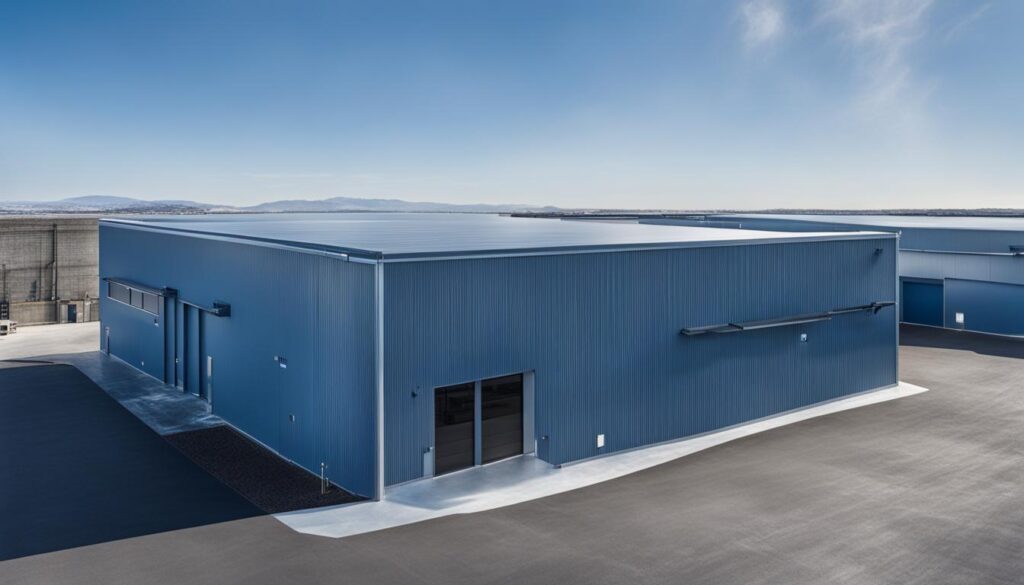
| Solar Roofing Solutions | Benefits |
|---|---|
| 1. Solar panels | – Harness clean energy – Reduce reliance on fossil fuels – Lower energy costs over time |
| 2. Solar shingles | – Blend seamlessly into the roof – Generate electricity without bulky panels – Increase property value |
| 3. Solar roof tiles | – Durable and aesthetically pleasing – Wide range of design options – Enhance the curb appeal of the roof |
As the demand for solar roofing options continues to grow, advancements in technology and design offer a wide range of choices. Whether it’s traditional solar panels, solar shingles, or solar roof tiles, there is a solution to fit every architectural style and energy requirement.
By embracing solar roofing solutions, individuals and organizations can contribute to a cleaner and more sustainable future, while saving on energy costs.
Harnessing Natural Light with Roof Daylighting
Roof daylighting is an effective and natural way to light a building, resulting in significant energy savings. By utilizing skylights and sun tubes, we can bring abundant natural sunlight into the interior space, reducing the reliance on artificial lighting and decreasing energy consumption.
Skylights:
Skylights are windows installed on the roof, allowing daylight to enter the building from above. They come in various designs, including fixed, vented, and tubular, to suit different architectural styles and lighting needs. Skylights provide an aesthetic appeal while maximizing the amount of natural light that penetrates the building.
Sun Tubes:
Sun tubes, also known as tubular skylights or light pipes, are an innovative solution for bringing natural light to interior spaces that are not directly adjacent to the roof. Consisting of a highly reflective tube that runs from the roof to the ceiling, sun tubes capture sunlight and transport it into the building, illuminating areas that would otherwise be dark and gloomy.
The Benefits of Roof Daylighting:
- Energy Savings: By reducing the need for electrical lighting during the day, roof daylighting can lead to significant energy savings. This not only reduces utility costs but also contributes to a more sustainable and environmentally friendly building.
- Elevated Mood and Productivity: Natural light has been shown to positively impact human well-being, contributing to improved mood, concentration, and productivity. Incorporating roof daylighting into a building design creates a more pleasant and conducive environment.
- Visual Comfort: The soft and diffused light from skylights and sun tubes enhances visual comfort by reducing glare and improving color rendition. This creates a more appealing and visually pleasing atmosphere within the building.
- Connection with Nature: Roof daylighting allows occupants to experience the ever-changing natural light patterns throughout the day, fostering a greater sense of connection to the outside world and nature.
- Sustainable Lighting Solution: Harnessing natural light reduces the demand for electricity, thus decreasing greenhouse gas emissions associated with electrical generation. Roof daylighting aligns with sustainable building practices and contributes to a greener future.
Choosing the Right Contractor
When considering roof daylighting installations, it is crucial to choose an experienced contractor familiar with this specialized field. Proper installation is vital to ensure optimal performance and longevity, as well as to avoid any potential issues such as water infiltration or structural concerns.
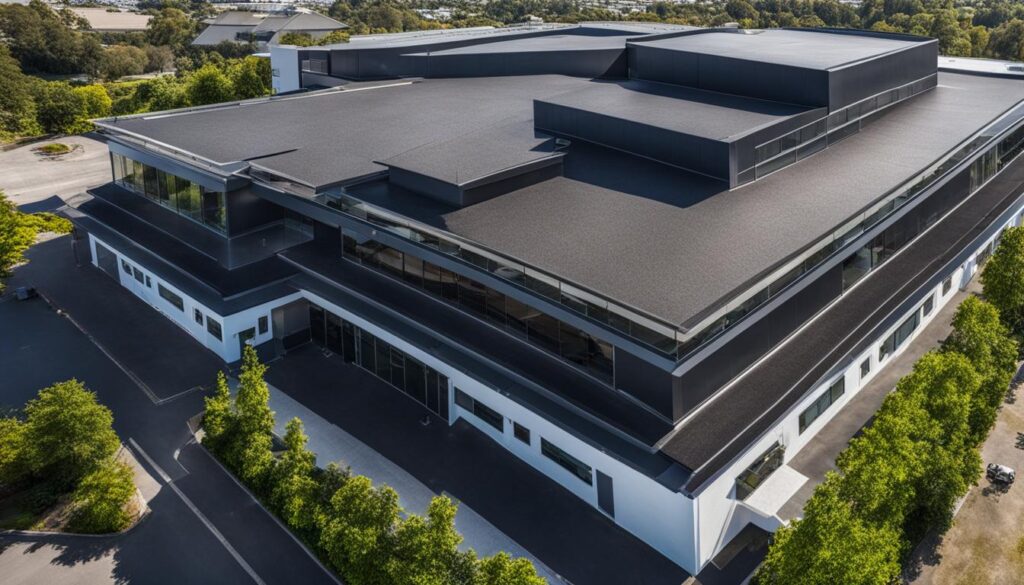
Understanding the Types and Benefits of Green Roofs
Green roofs offer a unique approach to sustainable roofing by integrating vegetation into a building’s roofscape. These environmentally friendly roofs, also known as living roofs or vegetated roofs, provide numerous benefits that contribute to energy conservation, urban sustainability, and overall environmental enhancement.
Types of Green Roofs
Green roofs can be classified into three main types: extensive, semi-intensive, and intensive. The classification depends on factors such as the depth of the growing medium, maintenance requirements, and the variety of vegetation used.
1. Extensive Green Roofs:
Extensive green roofs have a thin layer of lightweight soil or growing medium. They typically support low-growing and low-maintenance vegetation, such as grasses, herbs, and succulents. Extensive green roofs require minimal care, making them ideal for large-scale applications and buildings with weight restrictions.
2. Semi-Intensive Green Roofs:
Semi-intensive green roofs have a slightly deeper growing medium, allowing for a wider range of plant species, including shrubs and small trees. These roofs require moderate maintenance and can provide habitat for birds and pollinators.
3. Intensive Green Roofs:
Intensive green roofs have the deepest growing medium, enabling the cultivation of a variety of vegetation, including grass, shrubs, trees, and even rooftop gardens. These roofs require more intensive maintenance and irrigation systems, but they offer greater opportunities for outdoor spaces and recreational activities.
Benefits of Green Roofs
“Green roofs offer a multitude of benefits, ranging from energy conservation to mitigating the urban heat island effect and managing stormwater runoff.”
1. Energy Conservation: Green roofs act as insulators, reducing heat transfer between the building and the environment. By providing an additional layer of thermal protection, green roofs help regulate indoor temperatures, reduce the need for HVAC systems, and lower energy consumption.
2. Mitigation of the Urban Heat Island Effect: As cities continue to develop, urban heat islands become more prevalent. Green roofs combat this effect by absorbing and evaporating heat, minimizing temperature fluctuations, and creating a more comfortable microclimate.
3. Stormwater Management: Green roofs significantly reduce stormwater runoff by absorbing rainwater and slowing down its release into the drainage system. This helps prevent flooding, relieves stress on stormwater infrastructure, and improves water quality by filtering pollutants.
4. Environmental Enhancement: Green roofs create new habitats for birds, insects, and other wildlife in urban environments, thereby promoting biodiversity and supporting ecosystems. They also help improve air quality by filtering pollutants and capturing carbon dioxide, contributing to a cleaner and healthier urban ecosystem.
5. Aesthetic Appeal: In addition to their environmental benefits, green roofs enhance the visual appearance of buildings and urban landscapes. The presence of lush greenery and vibrant vegetation adds beauty and tranquility to the surroundings.
The Role of Reflective Roof Coatings in Florida
In the sunny and rainy climate of Florida, it is essential to protect roofs from the damaging effects of the elements. Reflective roof coatings, such as elastomeric coatings, play a crucial role in safeguarding roofs and offering energy savings. These coatings provide a protective barrier that shields roofs from rain, heat, and UV rays, helping to extend their lifespan.
One of the main benefits of reflective roof coatings is their ability to reflect sunlight instead of absorbing it. By doing so, they significantly reduce the amount of heat absorbed by the roof, resulting in lower interior temperatures. This not only improves comfort levels inside the building but also reduces the strain on air conditioning systems, leading to energy savings and lower utility bills.
When properly applied on various roof surfaces, reflective roof coatings offer exceptional protection against the harmful effects of UV rays. UV rays can cause the deterioration and fading of roofing materials over time. By reflecting these rays, the coatings help maintain the integrity and beauty of the roof, preventing premature aging and reducing the need for costly repairs or replacements.
In summary, reflective roof coatings are an excellent investment for homeowners and businesses in Florida. They not only provide roof protection from rain, heat, and UV rays but also contribute to energy savings and lower utility costs. By choosing reflective roof coatings, you can enhance the durability and efficiency of your roofing system while maintaining the aesthetic appeal of your property.
Conclusion
In conclusion, the use of sustainable roofing options, such as green roof coatings and cool roofs, along with the incorporation of green building materials, offers significant advantages for buildings in terms of energy efficiency, stormwater management, and overall sustainability. By embracing these eco-friendly solutions, we can contribute to a greener future and reduce our environmental impact.
By utilizing sustainable roofing options and green building materials, we can create buildings that are environmentally friendly and contribute to a more sustainable future. Whether it’s the utilization of green roof systems that help with stormwater runoff management, the implementation of roof rainwater harvesting to reduce freshwater consumption, or the installation of solar roofing solutions for clean energy production, these practices support our commitment to sustainability and environmental stewardship.
Need your Tampa commercial roof serviced? Contact Tampa’s top commercial roof coating contractor to get started today.
FAQs
What are the benefits of green roof coatings?
Green roof coatings offer a sustainable solution for buildings, providing numerous benefits such as energy cost reduction and extended roof life. They also help reflect the sun’s rays instead of absorbing them, significantly lowering the temperature of the roof surface during the summer. Additionally, these coatings help keep re-roofing debris out of landfills and contribute to the overall eco-profile of a building.
How do cool roofs and roof coatings reduce energy costs?
Cool roofs and roof coatings play a vital role in reducing the load on HVAC systems and cutting energy costs. These roofs reflect the sun’s heat or emit the heat they absorb, keeping the building cooler. By maintaining lower roof temperatures, cool roofs and coatings help reduce the need for air conditioning and save on energy consumption.
What are the benefits of green roofs?
Green roofs offer a multitude of benefits for buildings. They provide additional usable space, help with stormwater runoff management, minimize the urban heat island effect, and improve energy efficiency. Green roofs also extend the life of the roofing system and contribute to the overall sustainability and eco-profile of a building.
How does roof rainwater harvesting contribute to sustainability?
Roof rainwater harvesting is a simple and effective way to capture rainwater and reduce freshwater consumption. By diverting and filtering rainwater, it can be used for various purposes like watering plants or washing cars in a more eco-friendly way. Roof rainwater harvesting helps conserve water resources and minimize the environmental impact of water usage.
Why are solar roofing solutions gaining popularity?
Solar roofing solutions, such as solar panels, are growing in popularity due to federal tax credits, clean energy production, and rising energy prices. Installing solar panels on a roof allows buildings to generate their own electricity and reduce reliance on the grid. However, it is important to consult with a roofing professional before installation to ensure proper planning and avoid potential issues.
How does roof daylighting contribute to energy savings?
Roof daylighting is an effective and natural way to light a building, resulting in significant energy savings. Skylights and sun tubes can be installed to allow natural sunlight into the building, reducing the need for artificial lighting. Choosing an experienced contractor for proper installation is crucial to avoid any potential issues with water infiltration.
What is LEED certification, and how does it relate to roofing?
LEED (Leadership in Energy and Environmental Design) certification is a widely recognized green building rating system. By working with commercial roofing specialists experienced in LEED projects, buildings can earn LEED credits through the installation of vegetative, cool, or solar roofs. These specialists also support sustainable practices by completing necessary paperwork, minimizing material travel, and performing on-site recycling.
What are the different types and benefits of green roofs?
Green roofs can be classified into three types: extensive, semi-intensive, or intensive, depending on their depth, maintenance requirements, and vegetation diversity. These roofs offer various benefits, including energy savings through insulation, mitigation of the urban heat island effect, stormwater management, environmental enhancement, and aesthetic appeal.
What is the significance of Toronto’s green roof initiatives?
Toronto is at the forefront of green roof implementation, supported by clear guidelines and robust funding through the Toronto Green Roof Bylaw. The city offers incentives for green roof installations, including grants for vegetated areas and strict design and construction standards aligned with the Toronto Green Roof Construction Standard. These initiatives contribute to Toronto’s commitment to energy efficiency and urban sustainability.
How do reflective roof coatings benefit buildings in Florida?
Reflective roof coatings, such as elastomeric coatings, provide a barrier that protects roofs from the elements and offers energy savings. In Florida, where rain and heat are significant factors, these coatings reduce leaks, black mold growth, and lower interior temperatures by reflecting sunlight. Properly applied on various roof surfaces, they can extend roof life, protect against UV rays, and maintain the beauty of the roof.

